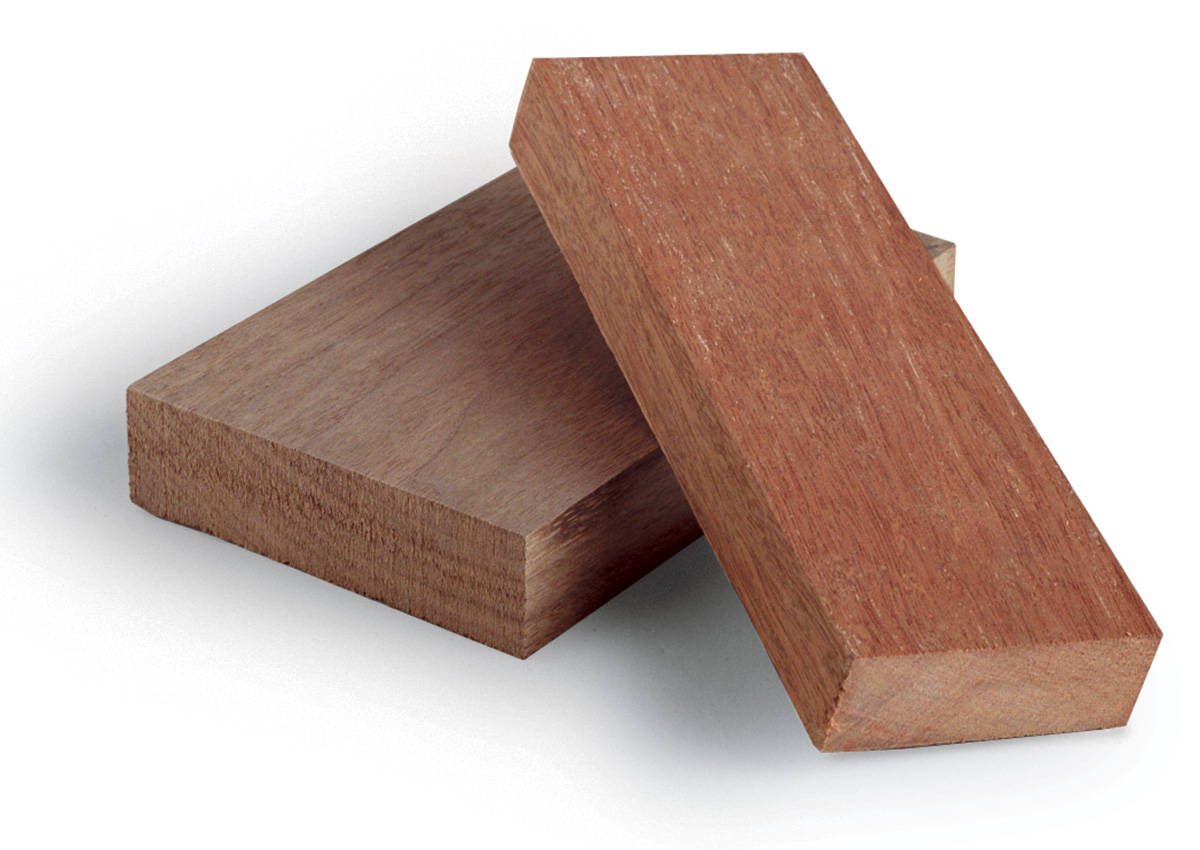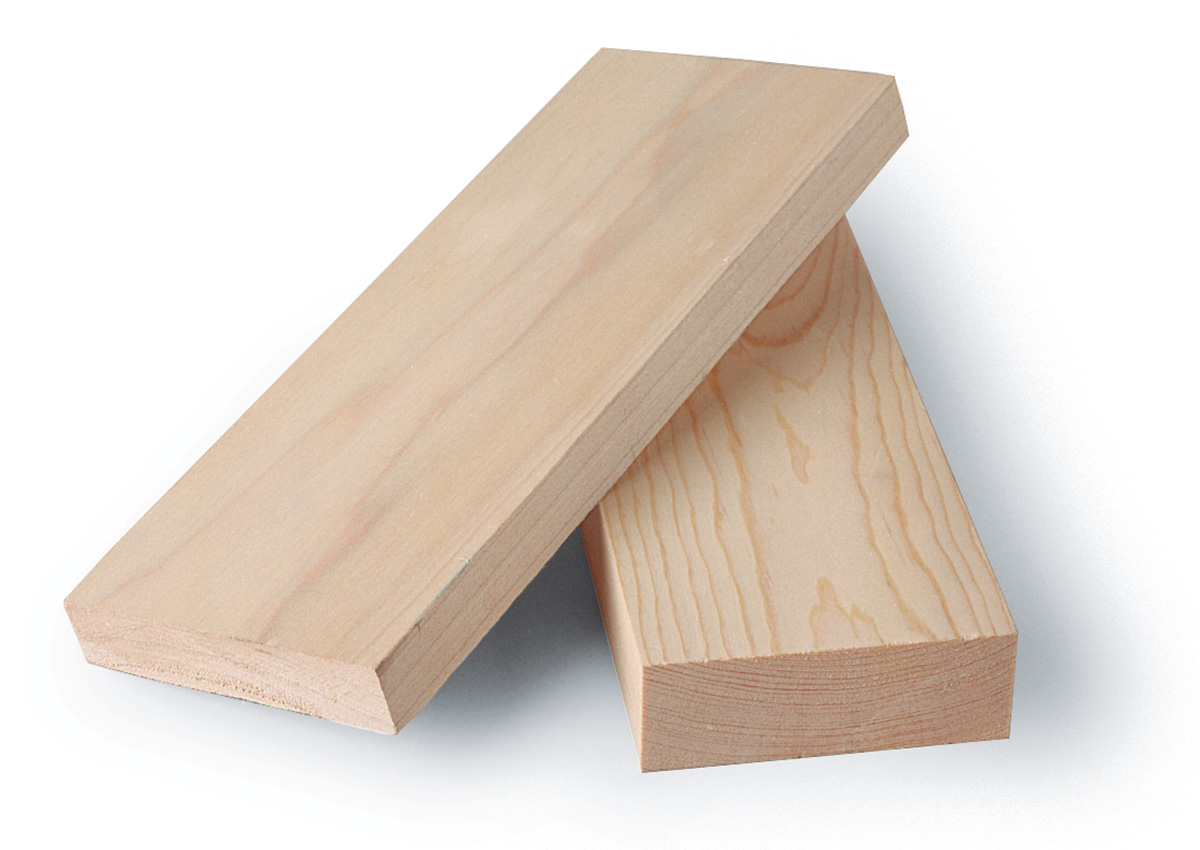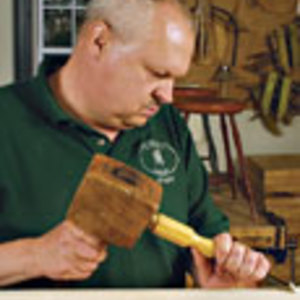Choosing The Right Wood for Chairs and Other Furniture
Fashion is a poor reason for selecting a wood, but strength, stability, appearance, workability, availability, price, and dimensions are more important factors.

Synopsis: Master chairmaker Mike Dunbar explains how important it is to select wood wisely for your project. For instance, chair parts serve distinct mechanical functions, and materials should be chosen accordingly. Fashion is a poor reason for selecting a wood, but strength, stability, appearance, workability, availability, price, and dimensions are reasonable factors.
Deciding which wood to use is typically the second step in the complicated process that results in a piece of furniture. We decide what we want to make, then choose materials. But this secondary step is of primary importance. There are good reasons to avoid certain woods in certain circumstances. Properties differ from one species of wood to another, making one type more suitable for a particular use than another.
A Windsor chair is a good example of how to take advantage of the properties of various woods. Customers regularly ask me to make a Windsor chair out of a single wood. I refuse. A good Windsor is made of three different woods. I point out that 200-yearold, three-wood Windsors are plentiful, and most are still as tight as the day they were made. On the other hand single-wood factory chairs crumble within a decade. Early American chair makers understood that the chair parts serve distinct mechanical functions, and they chose materials accordingly.
A Windsor’s undercarriage requires stiff parts that can withstand 200 squirming pounds. Because the legs are turned, the wood must also hold crisp details. Mahogany or walnut may take the detail but won’t have sufficient strength. A coarse-grained wood like oak is strong enough but will not turn as crisply. Maple and yellow birch fill both requirements.
I further explain that a Windsor chair’s back is engineered like a suspension bridge. It is anchored at both ends, with a tough, flexible web between. The arm, bow and long spindles form a back that is like a partially coiled spring in that it flexes and absorbs stress. The back must be made of a species that is tough and flexible. Oak, ash and hickory are good choices. The stumps and short spindles support the back and, like the legs, need to be made of a wood that is rigid and turns well—again, birch or maple.
The seat anchors the back and the undercarriage. The Windsor’s crucial joints require a harder wood working against a softer one. For example, the spindle tenons are faceted and left slightly oversized. When driven into their corresponding holes in the softer seat, they deform the wood, creating an incredibly durable joint. Pine, poplar or bass will conform to the tenon and grip it. A wood that is as hard as the spindles, such as cherry or maple, will not.
Look beyond fashion
In the 80s I was usually asked to make all-walnut chairs. In the 90s it was all cherry. Woods go in and out of favor. But fashion alone is frequently a poor reason to choose a wood for a project. Traditional uses exist because they have passed the test of time. Those who ignore them are asking for trouble. The following are some of the major reasons to choose one wood over another.
Strength
You want your project to last and be passed on to future generations. Above all, you do not want it to break or fall apart, because this does a number on your ego and reputation. The wood you choose should be sufficiently strong to withstand the piece’s intended use. Furniture that bears the weight of the human body—chairs, beds, step stools, library stairs—normally is made of hardwoods.
Wear is another long-term concern. A pine surface in daily contact with human hands, elbows and feet will not hold up as well as durable hardwood.
Many pieces of furniture use more than one type of wood. While a desk is best made of a wood that will wear well, interior components are often made of softer woods that are less expensive and easier to work with.
Stability

Just as you do not want your piece of furniture to break, you do not want it to warp or pull itself apart. Some woods are more stable than others, meaning they are less likely to experience these problems. Woods such as mahogany and walnut are noted for their stability, while beech, lard maple and white birch have bad reputations based on their relative instability.
Stability is important for wide, unrestrained surfaces such as table leaves. It would not do for this surface to warp. However, it is also a concern in case construction, where wood movement could tear apart a piece and cause joints to open or drawers to bind.
Appearance
Wood species vary in their appearance. Some woods have a pronounced figure and, when used in the right place, can produce dramatic results. Mahogany, walnut and many exotics offer bold figure. Some trees of otherwise even-colored wood—such as maple or birch—can also produce spectacular figure.
On the other hand, some woods—such as white birch, bass and poplar—are clear and bland. This property allows them to stain well or even masquerade as another species.

Color is another consideration, Some species are light, and others dark. You may want to select a wood that matches your decor or a client’s. Many exotics have brilliant colors rather than the white, tan and brown typical of native woods. Contrasting woods can be used in a single piece of furniture to achieve a desired effect.
Appearance and fashion are significant factors, obviously. But a species’ appearance should not overshadow the more paramount concerns of strength and stability.
Workability

Working wood requires effort, and some woods are harder to work than others. This is a definite concern if you do a lot of handwork. In the old days, cabinetmakers charged extra for furniture made out of maple as opposed to walnut or mahogany. Machines have equalized this problem somewhat, but hard-to work woods will cause more wear and tear on blades and equipment, if not us. The relative ease of working and joining pine and poplar has made them traditional favorites for interior components such as drawer sides, bottoms and slides.
Availability
It seems obvious that you can’t make a project out of a wood that you can’t get, But you may not want to choose a wood that is in limited supply—one that forces you to run from yard to yard to gather a sufficient quantity. There may be a similar species that is more readily available.
Price
The cost of materials is always a concern. If you or a client has a firm budget, you may want to substitute something less expensive for the wood of choice. Using butternut rather than walnut is an example. We recently made a run of handscrews for my school’s shop. For the sake of appearance, I suggested cherry for the jaws, but I told the staff member we sent to the lumberyard to use his discretion. I was a lot happier when he bought yellow birch at $4 per foot rather than the cherry at $6.
So-called “secondary” woods are usually less expensive and are used in areas that don’t show. For example, pine was often used for cabinet backboards because wide boards were easy to come by and relatively inexpensive.
Dimensions
The length, width or thickness of the woods available at your lumberyard can also impact your decision. If you need wide boards for a tabletop, and the yard has nothing greater than 6 in. or 8 in., you may want to choose a comparable wood that is available in wider boards. Bedposts can require stock up to Rather than jointing and gluing long posts from two lengths of material, you may prefer to choose a wood that is available in sufficient thickness.
From Fine Woodworking #145
Fine Woodworking Recommended Products

Ridgid R4331 Planer

DeWalt 735X Planer

AnchorSeal Log and Lumber End-Grain Sealer








Log in or create an account to post a comment.
Sign up Log in